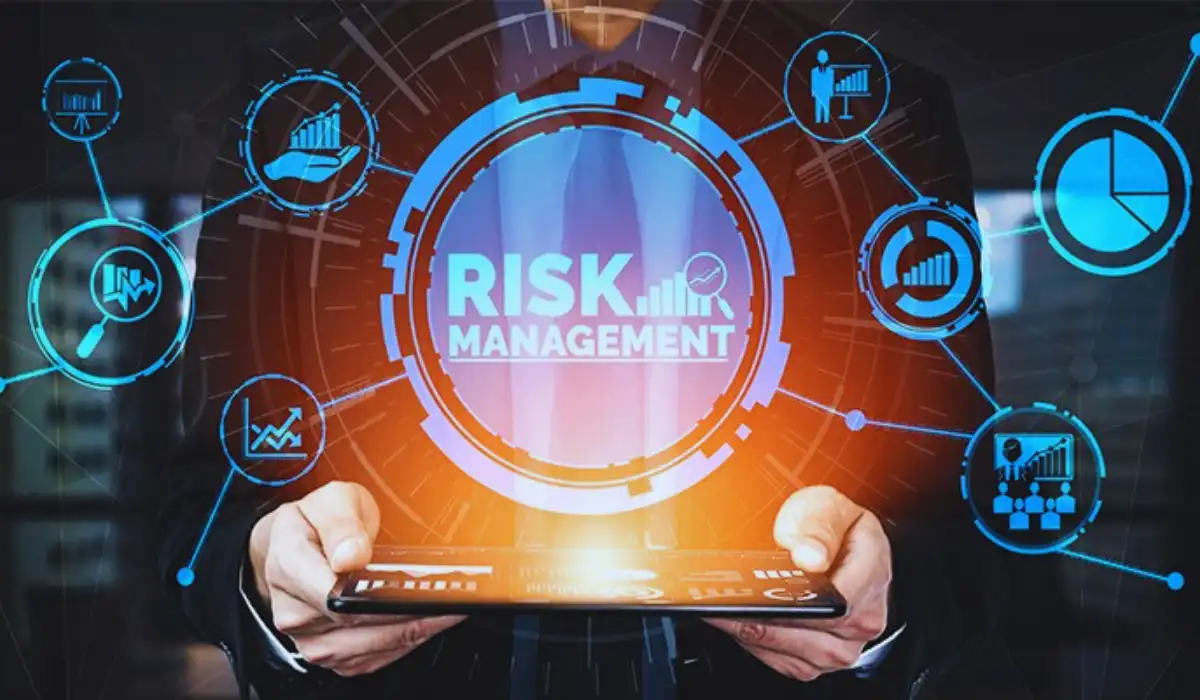Risk management in a cryptocurrency portfolio is a critical aspect of successful investment in the digital asset space. The cryptocurrency market is known for its extreme volatility, with prices capable of varying within a short period. This unpredictability can lead to significant losses for unprepared investors. Therefore, a structured risk management strategy is essential for safeguarding investments and maximizing potential returns.
Effective risk management involves, identifying, analyzing, and mitigating various risks associated with cryptocurrency investments, including market fluctuations, regulatory changes, liquidity issues, and cybersecurity threats. By adopting a proactive approach investors can create a resilient portfolio that withstands market fluctuations.
This article will explore key components of risk management in the crypto portfolio, including setting investment limits, using stop-loss orders, diversification strategies, and regular portfolio rebalancing. By understanding and implementing these strategies, investors can navigate the complexities of the crypto market more confidently and effectively.
Understanding Risk Management

Understanding the risk management in a cryptocurrency portfolio is crucial for investors navigating the volatile digital asset landscape. The unique characteristics of cryptocurrencies, including their rapid price fluctuations and regulatory uncertainties, require a structured approach to minimize potential losses and optimize returns.
Major Steps in Cryptocurrency Risk Management
Risk identification: The first and foremost step in cryptocurrency risk management is identifying the risks associated with investing in crypto assets. The risk identification process includes conducting a comprehensive analysis of potential risks, considering several factors, including market volatility, liquidity risk, operational risk, regulatory risk, and cybersecurity risk. For identifying risks, financial institutions like banks leverage certain tools like risk checklists, risk workshops, and risk registers.
Risk analysis of cryptocurrency risks: Once the risks have been found, the next step is to analyze specific risks in more detail. This process includes the assessment of the risk materializing and the potential effect it could have on the portfolio of financial institutions. Risk analysis involves both quantitative and qualitative techniques, such as stress testing, scenario review, and sensitivity analysis. The main objective of risk analysis is to evaluate the effectiveness of different risk mitigation strategies.
Performing cryptocurrency risk assessment: Once the risk identification and risk analysis have been completed, the next step is to assess the risks. To do this, each identified risk must be given a risk score that takes into account both its probability of happening and its possible effects on the financial institution’s portfolio. To do risk assessment, financial institutions can use a variety of risk rating systems, including the risk heat map and the likelihood-impact matrix. These techniques help prioritize risks and identify those that are so important that they need to be addressed right away.
Creating a cryptocurrency risk treatment plan: Creating a plan to address the risks that have been identified is the last phase in the cryptocurrency risk management approach. This entails creating a thorough risk mitigation plan intended to reduce each risk’s impact and possibility. To create a successful treatment plan, financial institutions can use a variety of risk mitigation strategies, such as risk acceptance, transfer, avoidance, and reduction. These strategies aid in ensuring proper portfolio diversification and efficient risk management for crypto investments.
Comprehending these four major steps – risk identification, risk analysis, risk assessment, and treatment planning, helps financial institutions navigate through the challenges in crypto asset investments and effectively manage potential risks. Implementation of a strong risk management framework helps you make informed decisions, hence, improving the overall stability and sturdiness of the crypto assets portfolio.
Identifying Key Risks in Crypto
Investing in cryptocurrency presents unique opportunities but also significant risks that investors must navigate through. Here are the key risks associated with cryptocurrency investments:
Market Volatility
Cryptocurrencies are subjected to market volatility, known for their extreme price fluctuations. For instance, Bitcoin has experienced drawdowns exceeding 50%, making it challenging to predict market movements accurately and increasing the potential for substantial gains or losses.
Regulatory Risks
The regulatory landscape for cryptocurrencies is still evolving. Changes in laws can impact the legality, trading, and taxation of cryptocurrencies. Sudden regulatory changes can lead to sharp market declines. These regulatory confusions can expose users to fraud and scams.
Security Risks
The decentralized nature of cryptocurrencies makes them vulnerable to hacking and theft. There aren’t any regulatory authorities to oversight in the crypto market. Investors may face risks from phishing attacks, loss of private keys, and security breaches on exchanges, which can result in irreversible financial losses.
Liquidity Risks
Some cryptocurrencies may lack sufficient market liquidity, making it difficult to buy or sell assets without significantly affecting their price. This can lead to challenges when trying to exit positions during market downturns. Liquidity in crypto assets makes it less susceptible to fluctuations in the crypto market.
Scams and Fraud
The largely unregulated crypto market is subjected to scams. New coins are emerging day by day and could have a higher scam risk than the already existing ones. Investors must conduct thorough research to avoid falling victim to these schemes.
Emotional Trading
Cryptocurrencies are highly volatile. The volatile nature of cryptocurrencies can lead to emotional decision-making, such as panic selling or FOMO (fear of missing out). This behavior can worsen losses and undermine investment strategies.
Technological Risks
Issues such as coding errors in smart contracts or platform failures can lead to significant losses. Understanding the underlying technology is crucial for mitigating these risks.
Lack of Understanding
The realm of cryptocurrency is extremely complex. Since cryptocurrencies leverage blockchain technology, it is crucial for users to understand its nuances, such as its workings, common pitfalls, and scopes. A lack of knowledge of blockchain technology and cryptocurrencies may lead to inaccurate decision-making. It will definitely affect your research and hence the crypto portfolio. Enhancing your knowledge in the field of cryptocurrencies is essential to manage your crypto portfolio effectively.
Risk Management Techniques
Cryptocurrency investment is a popular area that has gained significant popularity over the past few years, appealing to many investors looking for lucrative opportunities. However, with the increase in popularity, the risks associated with it have also increased. Therefore, it is crucial to master essential management techniques to effectively manage your crypto portfolio. Below are some of the popular risk management techniques you can use to manage your portfolio.
Conduct Thorough Research
You have to put in your efforts and dedicate sufficient time to successfully navigate through the cryptocurrency industry. Thousands of cryptocurrencies are there, start by comprehending various kinds of cryptocurrencies and their technology. Analyzing their market trends and historical performance will help you assess their potential. Always consider their regulatory frameworks and legality before choosing them.
Diversify your Portfolio
A key component of risk management for investments is diversification, and this holds true for cryptocurrencies. You can reduce the risk involved with particular assets by distributing your investments among other cryptocurrencies. Including a variety of crypto assets, such as coins, tokens, and stablecoins, is part of diversifying within the crypto market. By balancing risk and possible returns, this diversification strategy helps protect your portfolio from large losses.
Set Realistic Goals and Risk Tolerance
You must have a predetermined investment goal and time horizon prior to entering into the crypto market. Since cryptocurrencies are highly volatile, it is important to assess your risk tolerance and comfort level. Comprehending these things will help you to line up your investment techniques with your objectives and risk appetite.
Stay Informed
The cryptocurrency industry is highly dynamic and depends on various factors, such as news and market developments. Even small things will significantly influence the value of cryptocurrencies, resulting in downturns or upturns. Therefore, staying informed about the crypto market and trends will potentially help you make informed decisions, hence avoiding huge losses. You can consider subscribing to the newsletter, joining online communities, and participating in forums to gather information about the latest market trends. Since regulatory changes affect the crypto market it is crucial to monitor them.
Steer Clear of FUD and FOMO
Common emotions that can have a detrimental effect on trading decisions in the cryptocurrency market are FOMO (fear of missing out) and FUD (fear, uncertainty, and doubt). Traders may buy cryptocurrencies at inflated prices or enter panic exits when they give in to extreme FOMO or FUD, which could result in lost chances. Traders must maintain a logical and disciplined approach to trading and fight the need to make snap decisions motivated by these feelings. They can lessen the negative impact of FOMO and FUD on their trading results by adhering to their established trading strategy and performing a comprehensive examination.
Secure your Investments
Since cyber threats are increasing nowadays, it is important to ensure the safety of your crypto investments. Many cryptocurrency exchanges are in the world, select a reputable and secure cryptocurrency exchange to trade your cryptocurrencies. Secure your account with two-step verification to prevent unauthorized access. Utilizing hardware wallets for storing your digital assets will save you from online scams and fraudulent activities. Always be aware of phishing attempts and scams, and do not expose your private keys or sensitive information to anyone.
Using Stop-Loss Orders
If the cryptocurrency market faces sudden market downturns, you can safeguard your investments by setting up a stop-loss order. A stop-loss order will automatically sell your cryptocurrency when it reaches the predetermined price, limiting potential losses. It is important to sell your cryptocurrency when it reaches a certain price target. Frequently analyze and adjust these techniques based on the market conditions, helping in the optimization of your risk management strategy.
Avoid Emotional Decision Making
The crypto market is highly volatile, leading to emotional ups and downs. Do not let your emotions control your decisions. It is important to be conscious of the influence of emotions on investment decisions. You must develop a disciplined and logical approach to investing. Do not make rapid decisions based on short-term market conditions and always focus on long-term trends.
Consider Long Term Investing
The cryptocurrency market is appealing to investors who need quick profits. However, it is essential to consider the volatile nature of the crypto market. Consider investing in cryptocurrencies for long-term, instead of short-term goals. Long-term investment may help you to achieve great returns.
Seek Advice from Professionals if Needed
Since the realm of cryptocurrency is a vast area, you might not be able to know all the information. Many individuals are there, who have vast knowledge of the crypto market. Seek guidance from experienced investors if you are unclear about the intricacies of cryptocurrency investments. You can consider financial experts or advisors in the field, who have in-depth knowledge of cryptocurrencies and market trends.
Setting Investment Limits
Setting a limit for your investment is an essential part of risk management techniques. A predetermined budget will restrict you from overspending. You can purchase appropriate crypto assets that will provide you with great returns in the long term. You should only invest money that you are completely willing to lose, and never more than you can afford to lose.
Regular Portfolio Rebalancing
Since cryptocurrency markets are highly volatile, rebalancing will help you avoid huge losses and also increase your returns. Rebalancing is the process of regularly modifying your portfolio to preserve your desired asset allocation. You can rebalance annually, quarterly, or on another frequency. Rebalancing allows you to keep your investments within your ideal percentage, avoiding additional risks. If cryptocurrency goes to zero tomorrow, you will have lost no more than 10% of your whole assets. You must consider several factors while rebalancing your portfolio, such as transactional costs, potential tax impact, and market timing risks.
Risk-Reward Analysis
Cryptocurrencies are a popular yet volatile market, which carries inherent dangers. As a result, you should understand how to manage these risks effectively. The risk-reward ratio is one of the measures used to manage risk in cryptocurrency markets.
Traders frequently seek the greatest high-risk, high-reward cryptocurrencies. Even if you are seeking riskier assets, it is important to use risk-reward ratios and other protective strategies to potentially reduce losses in unfavorable market conditions. The risk-reward ratio, also known as the risk-return ratio, is a risk management technique used by traders to balance prospective gains and losses in a trade and to alter entry and exit points for effective trading. It is a measure that indicates how much a trader might possibly make in a trade versus how much money they may lose.
There is no single optimal risk-reward ratio because it is determined by a trader’s trading strategy and risk tolerance. When the projected returns are equal to the prospective losses if they are prepared to assume greater risk in exchange for possibly larger profits, some traders might feel at ease.
According to the theory, traders should utilize an RR ratio of at least 1:2. Accordingly, anticipated profits ought to be at least double the loss. While some traders could feel more at ease with a smaller ratio of 1:1 or 1:5, others would like a higher one of 1:3 or 1:4. You are willing to lose as much as you can gain if you maintain a 1:1 ratio between gains and losses. A strategy known as the scalping strategy, which allows traders to take short-term positions and strive for little but frequent gains, is typically used with such a small ratio.
Ways to evaluate the potential returns relative to each asset’s risk
Risk-reward ratio: Calculate the risk-reward ratio by dividing the potential profit by the potential losses.
Sharpe ratio: Use the Sharpe ratio to assess risk-adjusted returns. This metric compares the excess return of an asset over the risk-free rate to its volatility, allowing investors to understand how much return they are receiving for each unit of risk taken.
Standard deviation: Analyze the standard deviation of an asset’s returns to quantify its volatility. A higher standard deviation indicates greater risk, which should be factored into practical return assessments.
Conclusion
In the rapidly evolving world of cryptocurrency, effective risk management is not just a supplementary strategy but a fundamental necessity for any investor. The volatility and unpredictability of the crypto market can lead to significant gains, but they can also result in substantial losses if not managed properly. By diversifying investments, utilizing stop-loss orders, conducting research, regularly rebalancing, setting investment limits, and maintaining emotional discipline investors can significantly reduce their exposure to risks while maximizing their potential for greater returns. As the crypto landscape continues to evolve, those who prioritize effective risk will be better positioned to thrive in this dynamic environment. With careful planning and execution, investors can navigate the complexities of cryptocurrency investing with confidence and resilience.

